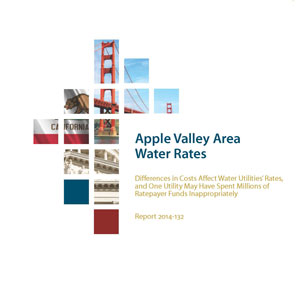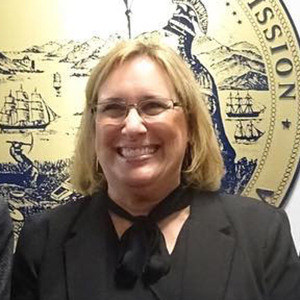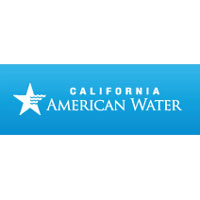On April 30, 2015, the California State Auditor (Auditor) released a report, Apple Valley Area Water Rates, which examined the rates for fiscal years 2011 through 2014 for four water utilities. Included were two investor-owned water utilities (IOUs), Apple Valley Ranchos Water Company (AVR) and Golden State Water Company (GSWC), and two public water districts, Hesperia Water District (HWD) and Victorville Water District (VWD). The audit was a result of a state legislator’s request that the Auditor examine the region’s water utility costs and rates.
The report noted that all four utilities have been reducing costs to keep rates reasonable and affirmed the rate-making process for GSWC and AVR. The report provided a clear explanation as to why water rates differed in the region. First, it noted that although the two IOUs’ rates were higher than the two public water districts, the operating costs for the four utilities are comparable. The rate differentials were primarily beyond the control of the IOUs for three reasons: (1) the two IOUs have significantly fewer customers than the public districts over which to spread fixed costs; (2) the IOUs must pay income and property taxes and fund additional initiatives such as low-income rate assistance programs, none of which are obligations of the public water districts; and (3) the public water districts are able to augment their operating revenues with taxpayer and homeowner subsidies through property taxes and other sources and with revenues from new service connection fees that are included in home mortgages, not water rates.
Additionally, the report noted that HWD and VWD have deferred investments and infrastructure improvements to keep rates lower (and artificially low, one might argue). The report contained information making it clear that if all of these cost and revenue/subsidy factors were normalized to eliminate the differences, the rates of the four utility systems would be comparable.
According to AVR’s Vice President and General Manager Tony Penna, “This audit confirms that Apple Valley Ranchos’ rates and supporting documentation are regulated, public, transparent and comprehensive. Unlike what appears may be happening in government-owned water utilities as this state audit indicates, it is important for Ranchos’ customers to be confident the rates they pay for water service are authorized and set by an independent third party in a public, comprehensive and transparent manner.”
As was the case with two other state audits of water utility rates in the past two years, this report found a questionable activity with an aspect of the public water districts’ operations, not the IOUs. The report called into question VWD’s decision in 2009 to lend $21.9 million in ratepayer revenues to the city at a low interest rate, while borrowing $20 million at a higher interest rate, thereby, incurring interest costs. The Auditor also asserted that VWD’s customers had not realized benefits from a decision to build a $31 million wastewater treatment plant. In addition, the report said the use of water delivery fees may be in violation of Proposition 218. VWD strongly objected to the Auditor’s conclusions about its operations, but the report’s outcome remained unchanged.
The audit yielded the following three recommendations:
- Water districts should document their cost-saving efforts and quantify any specific cost savings achieved from their respective efforts to demonstrate how they are working towards keeping rates down.
- HWD and VWD should consider the feasibility of using revenues from sources other than water rates to implement rate assistance programs.
- VWD should revise its policies to prohibit transfers or loans of water fee revenue for non-water purposes and specify the circumstances under which it can invest water revenues. Additionally, it should seek reimbursement from the city for its unrecovered interest and construction costs.
- Public agencies need to find a way to assist low-income water customers.





